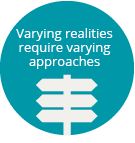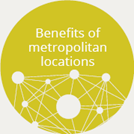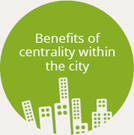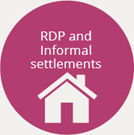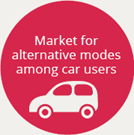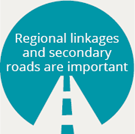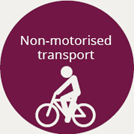Key conclusions from 2011 GCRO Quality of Life transport analysis, and subsequent implications for the Gauteng Integrated Transport Master Plan (IMTP) process, include the following:
GCR citizens' experience of access to the space economy, social amenities and travel conditions, are likely to vary widely. The implication is that the starting point for transport planning in the province should be to understand the variations in needs and experiences at a fine scale; rather than one-size-fits-all solutions, a wide variety of responses and solutions are needed.
Being located in or close to the traditional CBDs of Johannesburg, Pretoria, and (to a lesser extent) the town centres of the East and West Rand confer significant advantages to residents in terms of proximity to work and other opportunities, with good access to public transport. An acceleration of government coordinated housing-transport strategies in central areas with already high accessibility is to be encouraged.
Being located in or close to the traditional CBDs of Johannesburg, Pretoria, and (to a lesser extent) the town centres of the East and West Rand confer significant advantages to residents in terms of proximity to work and other opportunities, with government coordinated housing-transport strategies in central areas with already high accessibility is to be encouraged.
As a counterpoint to the above, residents of new RDP-type settlements and informal settlements (either within existing formal townships, or in exclusively informal areas) face much lower access and more onerous and costly mobility conditions, often necessitating long and costly public transport trips to access jobs and services.
The single most problematic aspect of day-to-day mobility for public transport users in Gauteng is the high cost of travel, especially for people reliant on taxis (rather than bus or rail), which is also by a large margin the most important public transport mode in the province. Given the large share of poor households’ income being spent on transport, lowering taxi fares might be a key anti-poverty strategy to consider. Lowering fares is difficult to achieve sustainably, but it could involve providing operating subsidies to taxis as a part of the deployment of selected Integrated Rapid Public Transport (IRPT) systems, especially if savings are achieved in other parts of the network. From the point of view of low-income commuters it might be more important to lower costs than to speed up public transport, given the fact that travel times are more or less independent of travel modes in Gauteng. This suggests that government interventions such as Bus Rapid Transit (BRT) systems should be thought through carefully to avoid situations where higher speeds come at the cost of higher fares to vulnerable users over the long term, perhaps due to insufficient demand on certain corridors.
The reasons car users give for not using public transport have less to do with speed than with other perceived benefits of the car – flexibility, security, reliability. Crime and safety on public transport is not a significant concern for users or nonusers, except among the highest income users. This might inform strategies to provide attractive alternatives to the car: it suggests that even modest speed improvements to public transport, coupled with acceptable service quality aspects approximating those offered by the car, might have the greatest chance of success.
Urban freeways and higher order roads play an important role in linking parts of the province together with some parts – notably Johannesburg and Ekurhuleni – so closely linked in terms of daily mobility patterns as to be virtually indistinguishable. There is a need for a high level of coordinated planning and investment between the metropolitan municipalities, and possibly for a stronger role for a provincial-level body to coordinate and enforce joint action.
The data suggest that local, short-distance transport plays a very important role in people’s daily lives (in Johannesburg 84% of frequent trips stay within the metro; in Tshwane this figure is 90%). The work trip is important for providing access to economic opportunity; but non-work travel, to a variety of locations at a variety of times, has often not been given sufficient consideration in transport planning and provision. The implication is that transport and land use planning should be strongly focused on a variety of transport modes at the local level – looking at things like local amenities, sidewalks and street crossings for safe walking, and accessibility to shopping and services.
Internationally there has been a strong emphasis on transitioning towards non-motorised and public oriented transport systems. Commuter transport in the GCR is currently characterised by heavy reliance on private cars and taxis, which result in high levels of traffic congestion and pollution in the city-region. Questions have been raised regarding whether shifting from the current transport culture is at all possible, given the way transport in the city-region is currently functioning.
One of the major obstacles in shifting the car culture lies in how to make public transport and non-motorised transport (NMT) attractive to private car users. This requires a two-pronged approach to provide safe and convenient alternatives to car use, including infrastructure provision (with an integrated network of pedestrian and bicycleinfrastructure) and a societal shift in approaches to commuting. Adopting initiatives such as Ciclovía (Bogotá, Colombia) or Open Street (Cape Town), and creating partnerships between local municipalities and citizen lead groups, are likely to be important aspects of creating the necessary cultural change





